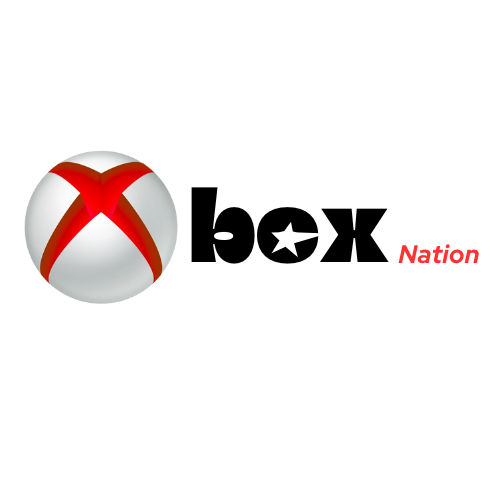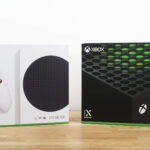Introduction: Elevating Your Xbox Gaming Experience to 120Hz Excellence
The landscape of console gaming has undergone a revolutionary transformation with the introduction of 120Hz gaming capabilities on Xbox Series X and Xbox Series S. This comprehensive guide delves deep into the intricate world of high-refresh-rate gaming, providing you with expert insights, optimal settings configurations, and monitor selection criteria that will fundamentally transform your gaming experience. Whether you’re a competitive esports enthusiast seeking every millisecond advantage or a passionate gamer pursuing the ultimate visual fluidity, mastering 120Hz optimization represents a crucial investment in your gaming future.
- Introduction: Elevating Your Xbox Gaming Experience to 120Hz Excellence
- Understanding 120Hz Gaming Technology and Its Impact
- The Science Behind High Refresh Rate Gaming
- Xbox Series X vs Xbox Series S: 120Hz Capabilities Compared
- Essential Monitor Specifications for Xbox 120Hz Gaming
- HDMI 2.1: The Gateway to High-Performance Gaming
- Panel Technology: IPS vs VA vs TN vs OLED
- Response Time and Input Lag Optimization
- Top Gaming Monitors for Xbox 120Hz Gaming (2024 Edition)
- Configuring Xbox Series X/S for Optimal 120Hz Performance
- Game-Specific Optimization for 120Hz Gaming
- Troubleshooting Common 120Hz Issues
- Display Not Detecting 120Hz Capability
- Frame Rate Inconsistencies and Stuttering
- HDR and Color Space Issues
- Performance Metrics and Benchmarking Tools
- Future of Xbox 120Hz Gaming
- Optimizing Your Gaming Environment
- Investment Considerations and Cost-Benefit Analysis
- Conclusion: Mastering the 120Hz Gaming Revolution
- Sources and References
The transition from traditional 60Hz gaming to the smooth, responsive realm of 120Hz represents more than a simple numerical upgrade—it’s a paradigm shift in how we experience interactive entertainment. With frame rates doubling and input latency dramatically reduced, games become more responsive, competitive advantages multiply, and the overall immersion reaches unprecedented levels.
Understanding 120Hz Gaming Technology and Its Impact
The Science Behind High Refresh Rate Gaming
High refresh rate gaming fundamentally alters the relationship between your console, display, and visual perception. At 120Hz, your monitor refreshes its image 120 times per second, delivering twice the visual information compared to standard 60Hz displays. This technological advancement translates into tangible benefits: reduced motion blur, minimized screen tearing, enhanced motion clarity, and significantly improved input responsiveness.
The human eye’s ability to perceive these improvements varies among individuals, but studies consistently demonstrate that most gamers can distinguish differences up to and beyond 144Hz. The sweet spot for console gaming currently sits at 120Hz, representing an optimal balance between performance capabilities and visual enhancement. This refresh rate provides a 8.33-millisecond frame time, compared to 16.67 milliseconds at 60Hz—a reduction that competitive gamers particularly value.
Xbox Series X vs Xbox Series S: 120Hz Capabilities Compared
The Xbox Series X stands as Microsoft’s flagship console, engineered with cutting-edge AMD RDNA 2 architecture delivering 12 teraflops of processing power. This computational prowess enables native 4K gaming at 120Hz in select titles, though many games require resolution compromises to achieve these frame rates. The console’s advanced velocity architecture, custom SSD, and hardware-accelerated DirectX ray tracing create a foundation for next-generation gaming experiences.
Conversely, the Xbox Series S, while more affordable, approaches 120Hz gaming differently. With 4 teraflops of GPU performance, it typically targets 1080p or 1440p resolutions when running at 120Hz. Despite these differences, both consoles support Variable Refresh Rate (VRR), Auto Low Latency Mode (ALLM), and HDMI 2.1 features essential for optimal high-refresh gaming.
Essential Monitor Specifications for Xbox 120Hz Gaming
HDMI 2.1: The Gateway to High-Performance Gaming

HDMI 2.1 represents the cornerstone of modern high-refresh console gaming, supporting bandwidth up to 48Gbps—a substantial upgrade from HDMI 2.0’s 18Gbps limitation. This increased bandwidth enables 4K resolution at 120Hz with full RGB color, HDR support, and variable refresh rates simultaneously. When selecting a gaming monitor, HDMI 2.1 compatibility ensures future-proofing your investment and maximizing your Xbox’s capabilities.
Key HDMI 2.1 features include:
- Enhanced Audio Return Channel (eARC): Superior audio quality for home theater setups
- Quick Frame Transport (QFT): Reduced latency for competitive gaming
- Quick Media Switching (QMS): Eliminates black screens when switching content
- Dynamic HDR: Scene-by-scene or frame-by-frame HDR optimization
Panel Technology: IPS vs VA vs TN vs OLED
The panel technology underlying your gaming monitor profoundly impacts visual quality, response times, and overall gaming experience. Each technology presents distinct advantages and trade-offs:
IPS (In-Plane Switching) panels deliver exceptional color accuracy, wide viewing angles reaching 178 degrees, and consistent image quality. Modern IPS panels achieve response times under 1ms, making them increasingly competitive for high-refresh gaming. The technology’s superior color reproduction makes it ideal for gamers who also engage in content creation or appreciate vibrant, accurate visuals.
VA (Vertical Alignment) panels offer superior contrast ratios, often exceeding 3000:1, creating deeper blacks and more dramatic visual depth. While traditionally slower than IPS or TN, contemporary VA panels achieve competitive response times suitable for 120Hz gaming. These panels excel in darker gaming environments and provide excellent value propositions.
TN (Twisted Nematic) panels historically dominated competitive gaming due to their ultra-fast response times and high refresh rate capabilities. However, limited viewing angles and inferior color reproduction have reduced their market presence as IPS technology has advanced.
OLED technology represents the premium tier, delivering perfect blacks, infinite contrast ratios, instantaneous response times, and stunning HDR performance. The LG C2, C3, and G3 series exemplify OLED excellence for console gaming, though burn-in concerns and premium pricing remain considerations.
Response Time and Input Lag Optimization
Response time measures pixel transition speed, directly impacting motion clarity and ghosting artifacts. For 120Hz gaming, response times under 5ms prove adequate, though 1ms represents the ideal target. Gray-to-gray (GtG) measurements provide the most relevant metric for gaming performance.
Input lag, distinct from response time, encompasses the total delay between controller input and on-screen action. Premium gaming monitors achieve input lag under 10ms at 120Hz, with elite models reaching sub-5ms performance. This metric proves particularly crucial for competitive gaming genres including first-person shooters, fighting games, and racing simulations.
Top Gaming Monitors for Xbox 120Hz Gaming (2024 Edition)
Premium 4K 120Hz Monitors
LG 27GP950-B stands as a pinnacle of gaming monitor engineering, featuring a 27-inch Nano IPS panel supporting 4K resolution at 144Hz over HDMI 2.1. With 98% DCI-P3 color coverage, 1ms response time, and VESA DisplayHDR 600 certification, it delivers exceptional visual fidelity. The monitor includes hardware calibration support and comprehensive ergonomic adjustments.
ASUS ROG Swift PG32UQX represents the ultra-premium segment with its 32-inch mini-LED panel featuring 1,152 local dimming zones. This technology enables stunning HDR performance with 1,400 nits peak brightness while maintaining 4K 144Hz capabilities. G-SYNC Ultimate certification ensures tear-free gaming, though the premium pricing reflects its cutting-edge specifications.
Samsung Odyssey Neo G8 leverages Quantum Mini-LED technology across its 32-inch curved display, achieving 2,000 nits peak brightness and 1,196 local dimming zones. The 1000R curvature enhances immersion while CoreSync lighting adds atmospheric ambiance. Samsung’s Gaming Hub integration provides cloud gaming access without additional hardware.
Best Value 1440p 120Hz Options
Gigabyte M27Q-X delivers exceptional value with its 27-inch IPS panel supporting 1440p at 240Hz. While exceeding Xbox’s 120Hz maximum, the additional headroom ensures optimal performance. The KVM switch functionality adds productivity versatility, while the aggressive pricing makes high-refresh gaming accessible.
MSI Optix MAG274QRF-QD utilizes Quantum Dot technology for enhanced color vibrancy, achieving 97% Adobe RGB coverage. The Rapid IPS panel maintains 1ms response times while delivering superior color accuracy. MSI’s Gaming OSD software enables comprehensive customization through keyboard and mouse control.
Dell S2721DGF represents Dell’s gaming-focused engineering, featuring a 27-inch IPS panel with exceptional build quality and warranty support. The monitor’s versatile stand provides comprehensive ergonomic adjustments, while the subtle design aesthetic suits both gaming and professional environments.
Budget-Friendly 120Hz Solutions
AOC 24G2 proves that quality 120Hz gaming remains accessible at lower price points. This 24-inch IPS panel delivers 144Hz refresh rates, 1ms response time, and surprisingly accurate colors for its price segment. The frameless design maximizes screen real estate while maintaining affordability.
ViewSonic XG2405 combines value with performance through its 24-inch IPS panel supporting 144Hz refresh rates. The monitor includes customizable RGB lighting, blue light filters, and flicker-free technology for extended gaming sessions. ViewSonic’s exceptional warranty coverage provides additional peace of mind.
Configuring Xbox Series X/S for Optimal 120Hz Performance
System-Level Display Settings
Navigate to Settings > General > TV & Display Options to access comprehensive display configuration. Begin by selecting the appropriate resolution—4K UHD for Series X with compatible displays, or 1080p/1440p for optimal Series S performance. Enable “Allow 4K” and “Allow HDR10” when your display supports these features.
The refresh rate selection proves crucial: choose 120Hz when available, though some displays may require manual enabling through their on-screen menus. Verify successful 120Hz activation through the “4K TV details” section, which displays current capabilities and active features.
Advanced Video Modes Configuration
Within Video Modes, several options significantly impact gaming performance:
Allow Variable Refresh Rate (VRR) synchronizes console output with display refresh, eliminating screen tearing while maintaining responsive gameplay. This feature requires HDMI 2.1 or FreeSync-compatible displays.
Auto Low Latency Mode (ALLM) automatically switches compatible displays to their game mode, minimizing input lag without manual intervention. This proves particularly valuable when switching between gaming and media consumption.
Allow YCC 4:2:2 enables compressed color transmission, potentially necessary for achieving 4K 120Hz on bandwidth-limited displays. While slightly reducing color information, the visual impact remains minimal during gameplay.
Color Space and HDR Calibration
Color space selection impacts visual accuracy and compatibility. “Standard (Recommended)” suits most scenarios, while “PC RGB” may benefit computer monitor users. The color depth setting should remain at 10-bit for HDR content, reverting to 8-bit if compatibility issues arise.
HDR calibration through the Xbox Calibration app optimizes high dynamic range performance. This process adjusts black levels, white peaks, and color saturation to match your display’s capabilities. Proper calibration dramatically enhances HDR gaming experiences, revealing details in shadows while preventing highlight clipping.
Game-Specific Optimization for 120Hz Gaming
Competitive Multiplayer Titles
Call of Duty: Modern Warfare III and Warzone support 120Hz modes on both Xbox consoles, though resolution scaling differs. Series X maintains near-4K resolution using dynamic resolution scaling, while Series S targets 1080p-1440p. Disable motion blur and reduce graphical settings for maximum competitive advantage.
Fortnite implements impressive 120Hz optimization, maintaining stable frame rates even during intense building battles. Epic Games’ Unreal Engine 5 enhancements ensure visual quality remains high despite doubled frame rates. Performance mode prioritizes frame rate stability over visual fidelity.
Rocket League achieves flawless 120Hz performance at 4K on Series X and 1440p on Series S. The game’s relatively simple graphics enable consistent frame delivery, making it an ideal showcase for high-refresh gaming benefits.
Apex Legends recently added 120Hz support, though it requires manual enabling within game settings. The performance mode reduces resolution and visual effects but delivers substantially improved responsiveness crucial for battle royale success.
Racing Games Excellence
Forza Horizon 5 offers a performance mode targeting 60fps at higher resolutions or 120fps at reduced settings. The visual trade-offs remain minimal while the increased frame rate transforms the driving experience, particularly during high-speed racing.
Gran Turismo 7 competitor Forza Motorsport leverages the Xbox’s power for stunning 120Hz racing. Advanced physics calculations benefit from higher frame rates, improving vehicle control precision and response accuracy.
F1 23 includes comprehensive performance options, allowing players to prioritize frame rate or visual quality. The 120Hz mode proves essential for competitive online racing where reaction times determine victory margins.
Action and Adventure Optimization
Halo Infinite multiplayer supports 120Hz on both consoles, though campaign mode remains limited to 60fps for visual fidelity. The multiplayer’s reduced graphical complexity enables consistent high-frame delivery crucial for competitive arena combat.
Doom Eternal showcases id Tech 7’s optimization prowess, delivering 120Hz gameplay with minimal visual compromise. The enhanced fluidity perfectly complements the game’s frenetic combat pace.
Ori and the Will of the Wisps transforms at 120Hz, with its beautiful hand-drawn art achieving unprecedented smoothness. The precision platforming benefits substantially from reduced input latency.
Troubleshooting Common 120Hz Issues
Display Not Detecting 120Hz Capability
Verify HDMI cable specifications—many older cables lack bandwidth for 4K 120Hz transmission. Ultra High Speed HDMI cables certified for 48Gbps ensure compatibility. Cable length also impacts signal integrity; keep connections under 10 feet when possible.
Check display firmware updates through manufacturer websites. Many monitors require updates to enable full HDMI 2.1 functionality. Samsung, LG, and Sony regularly release updates addressing compatibility issues.
Some displays require manual 120Hz enabling through on-screen menus. Navigate display settings to locate refresh rate options, often found within gaming or picture mode configurations.
Frame Rate Inconsistencies and Stuttering
Variable Refresh Rate conflicts occasionally cause stuttering. Temporarily disable VRR to identify if it’s causing issues, then re-enable after system restart. Update both console and display firmware to resolve compatibility problems.
Background downloads or updates impact gaming performance. Pause all downloads and close unnecessary applications through the Xbox guide menu. Quick Resume features may also consume resources; close suspended games when pursuing maximum performance.
Network-related stuttering in online games requires connection optimization. Use wired Ethernet connections when possible, prioritize Xbox traffic through router QoS settings, and verify NAT type remains “Open” for optimal connectivity.
HDR and Color Space Issues
HDR washing out or appearing incorrect often stems from improper calibration. Re-run Xbox HDR calibration with display in game mode, ensuring room lighting matches typical gaming conditions. Adjust display HDR settings independently if built-in options exist.
Color banding in gradients indicates insufficient color depth. Verify 10-bit color output in Xbox settings and confirm display compatibility. Some displays require specific picture modes for full color depth support.
Black level mismatches create crushed shadows or elevated blacks. Adjust Xbox video fidelity & overscan settings, selecting “Standard” for TVs or “PC RGB” for monitors. Match display black level settings accordingly.
Performance Metrics and Benchmarking Tools
Built-in Xbox Performance Indicators
The Xbox Series X|S includes FPS indicators accessible through development mode, though standard users rely on in-game options. Many titles include performance metrics overlays displaying frame rates, resolution, and latency information.
Network statistics prove crucial for online gaming optimization. Access detailed network statistics through Settings > Network > Network settings > Test network speed & statistics. Latency under 50ms, zero packet loss, and consistent bandwidth ensure optimal online performance.
Third-Party Analysis Tools
Digital Foundry’s extensive analysis provides detailed performance breakdowns for major releases. Their YouTube channel and website offer frame rate analysis, resolution pixel counts, and visual setting comparisons invaluable for optimization decisions.
Variable Refresh Rate testing requires compatible displays with on-screen refresh rate indicators. Many gaming monitors include built-in refresh rate counters confirming VRR functionality and displaying real-time refresh rates.
Future of Xbox 120Hz Gaming
Upcoming Technology Enhancements
HDMI 2.1a specification introduces Source-Based Tone Mapping (SBTM), optimizing HDR performance by allowing consoles to handle tone mapping. This enhancement promises improved HDR consistency across different displays.
Display Stream Compression (DSC) technology enables higher resolutions and refresh rates within existing bandwidth limitations. Future implementations may allow 4K 144Hz or 8K 60Hz gaming on next-generation Xbox hardware.
Variable Rate Shading (VRS) and mesh shaders continue evolving, allowing developers to optimize performance while maintaining visual quality. These technologies prove essential for achieving consistent 120Hz performance in increasingly complex games.
Market Trends and Adoption
Monitor manufacturers increasingly prioritize HDMI 2.1 implementation, with 2024 models universally supporting the standard. Prices continue declining as production scales, making 120Hz gaming increasingly accessible.
Television manufacturers embrace gaming features, with LG, Samsung, and Sony leading VRR and ALLM adoption. Mini-LED and QD-OLED technologies promise enhanced HDR performance without OLED burn-in concerns.
Cloud gaming services explore high-refresh streaming, though bandwidth and latency challenges remain. Local hardware continues providing superior high-refresh experiences for the foreseeable future.
Optimizing Your Gaming Environment
Ergonomic Considerations
Monitor positioning significantly impacts gaming comfort and performance. Position the display 20-30 inches from your eyes, with the top edge at or slightly below eye level. This reduces neck strain during extended sessions while maintaining optimal viewing angles.
Ambient lighting affects perceived contrast and color accuracy. Bias lighting behind the monitor reduces eye strain while maintaining contrast perception. Avoid direct light sources causing screen reflections or glare.
Seating position influences reaction times and comfort. Maintain proper posture with feet flat, back supported, and arms parallel to the floor when using controllers. Invest in quality gaming chairs providing adequate lumbar support.
Audio Integration for Competitive Advantage
Spatial audio enhances gaming immersion and competitive performance. Xbox Wireless Headset and compatible devices support Dolby Atmos, DTS:X, and Windows Sonic spatial audio. These technologies provide precise positional audio crucial for competitive gaming.
Monitor speakers typically offer inadequate audio quality. Dedicated gaming headsets or speaker systems deliver superior frequency response, positional accuracy, and communication clarity. Consider open-back headphones for superior soundstage or closed-back designs for isolation.
Audio latency synchronization ensures visual and auditory elements align properly. HDMI eARC support maintains audio-video synchronization when using external audio systems. Adjust audio delay settings if synchronization issues persist.
Investment Considerations and Cost-Benefit Analysis
Budget Allocation Strategies
Prioritize display investment over other peripherals when pursuing 120Hz gaming. A quality monitor represents a long-term investment lasting multiple console generations. Allocate 40-50% of your gaming budget toward display technology.
Consider refurbished or open-box premium displays from reputable retailers. These options provide significant savings while maintaining warranty coverage. Manufacturer-refurbished units often include full warranties and rigorous testing.
Monitor financing options through retailers or manufacturers spread costs over time. Zero-interest promotions make premium displays accessible without immediate full payment. Calculate total costs including potential interest before committing.
Long-term Value Propositions
Future-proofing through HDMI 2.1 and advanced features ensures compatibility with next-generation consoles. Current investments remain relevant for 5-7 years, amortizing costs over extended periods.
Multi-purpose functionality extends value beyond gaming. High-refresh monitors excel for productivity, content creation, and media consumption. Home office integration justifies premium display investments.
Resale values for quality gaming monitors remain strong. Popular models from established manufacturers retain 50-70% value after two years. This consideration reduces effective ownership costs when upgrading.
Conclusion: Mastering the 120Hz Gaming Revolution
The transformation from standard refresh rates to 120Hz gaming represents a fundamental evolution in console gaming experiences. Through careful monitor selection, meticulous system configuration, and ongoing optimization, Xbox Series X and Series S owners unlock unprecedented responsiveness, visual fluidity, and competitive advantages.
The journey toward optimal 120Hz gaming requires initial investment and configuration effort, but the rewards justify these commitments. Reduced input latency transforms competitive gaming outcomes, while enhanced motion clarity creates more immersive single-player experiences. As game developers increasingly optimize for high refresh rates and display technology continues advancing, early adopters position themselves at the forefront of gaming evolution.
Whether pursuing competitive excellence or maximum immersion, this comprehensive guide provides the knowledge foundation for achieving your 120Hz gaming goals. The combination of cutting-edge hardware, optimized settings, and informed display selection creates gaming experiences that redefine what’s possible on console platforms.
The future of gaming increasingly embraces high refresh rates as standard rather than premium features. By implementing these optimization strategies and investing in appropriate display technology, you’re not merely improving current gaming experiences—you’re preparing for gaming’s high-performance future.
Sources and References
- Xbox Official Support Documentation: https://support.xbox.com/en-US/help/hardware-network/display-sound/120hz-gaming
- Digital Foundry Technical Analysis: https://www.eurogamer.net/digitalfoundry
- HDMI Licensing Administrator Specifications: https://www.hdmi.org/spec21sub/ultrahighspeedcable
- DisplayNinja Monitor Reviews and Guides: https://www.displayninja.com/
- RTings Comprehensive Display Testing: https://www.rtings.com/monitor
- Tom’s Hardware Gaming Monitor Reviews: https://www.tomshardware.com/reviews/best-gaming-monitors
- TechRadar Gaming Technology Coverage: https://www.techradar.com/gaming
- PC Gamer Hardware Recommendations: https://www.pcgamer.com/hardware/








